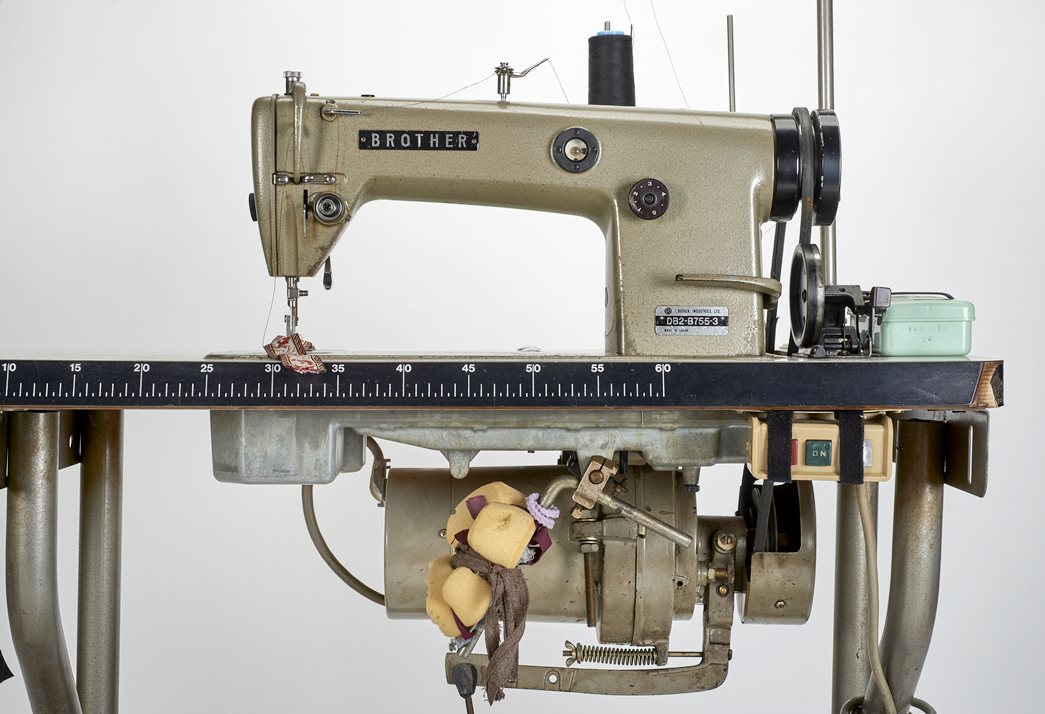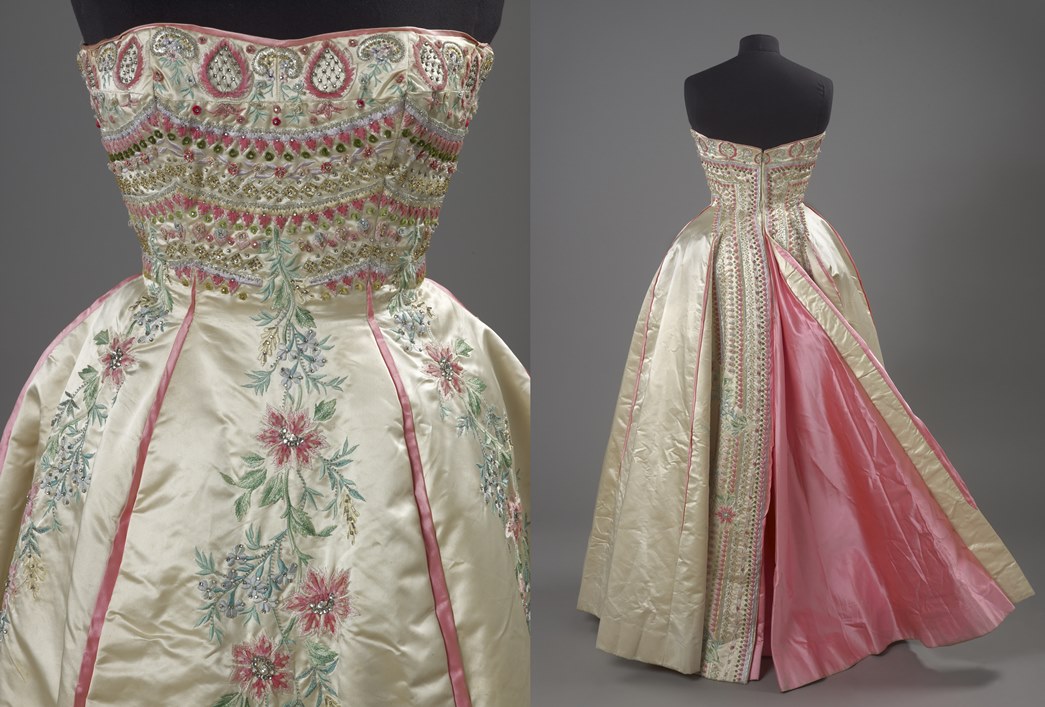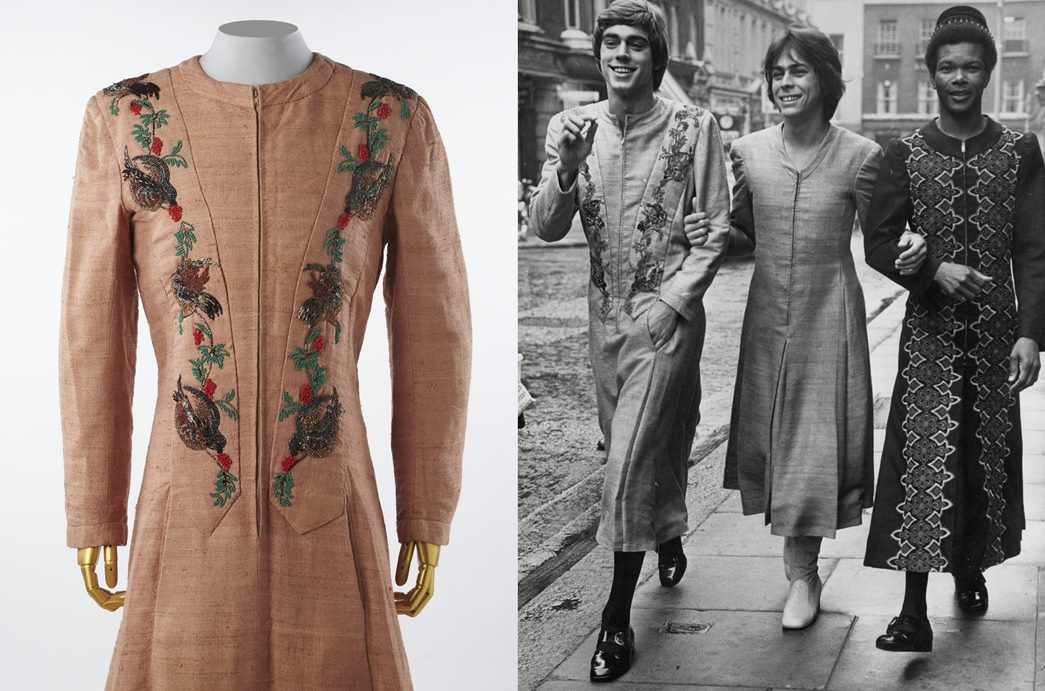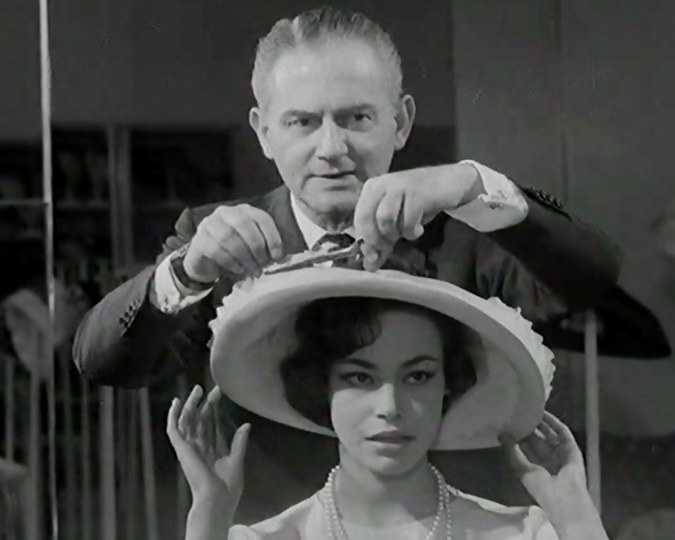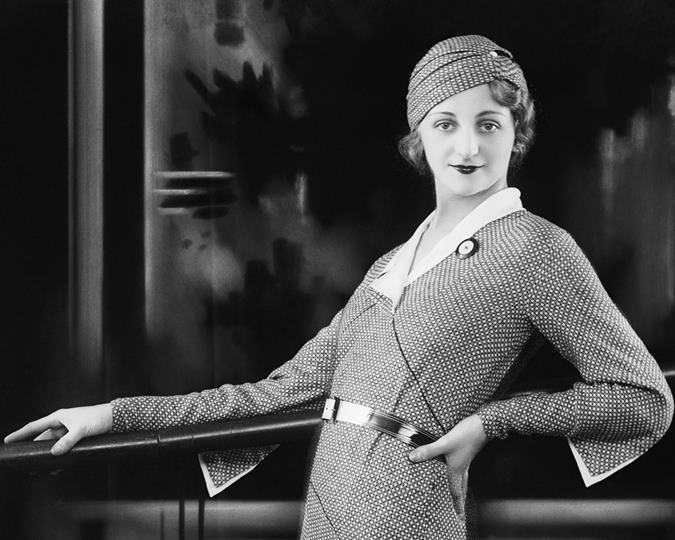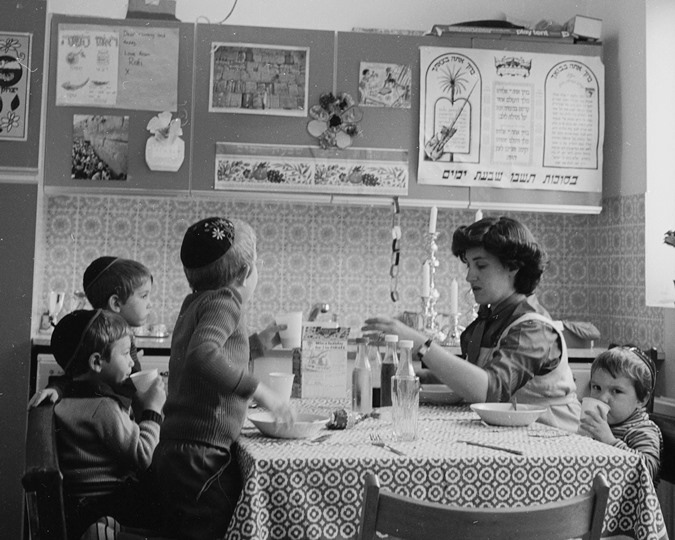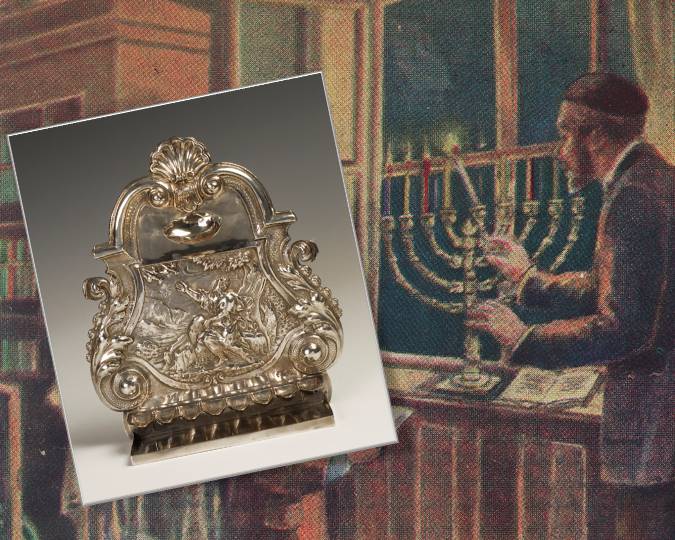The Museum of London Docklands’ new exhibition, Fashion City, is a celebration of the Jewish Londoners who helped to build the capital’s reputation as a fashion centre. From Dot Cotton’s Alexon coat to a Mr Fish maxi-smoking dress, these six objects offer an insight into the moving personal stories and glamorous garments that visitors will encounter at the exhibition.
In the 20th century, London was a global centre for the production of clothing and the creation of fashion trends. While Jewish people have long been associated with making clothes, the full extent of the contributions they made to London’s growing reputation as a global fashion capital and the democratisation of fashion through the development of ready-to-wear clothes in the 1900s have been widely forgotten.
The Museum of London Docklands’ new exhibition — Fashion City: How Jewish Londoners shaped global style (from 13 October 2023 to 14 April 2024) — is a celebration of the Jewish Londoners who helped to build the capital’s reputation as a fashion centre. The exhibition features fashion, photography, ephemera and social history items, including a Bellville Sassoon coat worn by Princess Diana on the day she announced her pregnancy with Prince William, and a Mr Fish dressing gown worn by thespian Sir Noël Coward!
It is very hard to choose just six objects not to miss, but the selection below offers an insight into the moving personal stories and glamorous garments that visitors can expect to encounter in Fashion City.
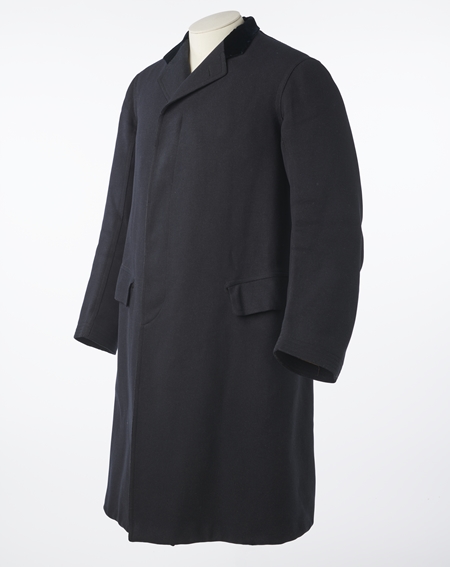
This Moss Bros coat was donated by Harry Moss, grandson of founder Moses Moses. (ID no.: 49.78/11)
1. Chesterfield
coat by Moss Bros
The first garment visitors will see in Fashion City is a dark blue men’s Chesterfield coat. It dates from around 1910, and is a very rare example of early Moss Bros tailoring. It may be an unassuming garment in appearance, but it tells an important story about the longevity of Jewish involvement in shaping London fashion.
While the exhibition is mostly based in the 20th century, it also explores the longer history of Jews working in the garment trades, and highlights two companies — Moss Bros and Angels (fancy dress and costume hire) — who started in the mid-19th century and are still around today.
Founded by Moses Moses and Daniel Angel, respectively, both started as second-hand goods dealers, evolved into military outfitters, and then forged their own paths.
2. An evening ensemble by Sophie Rabin
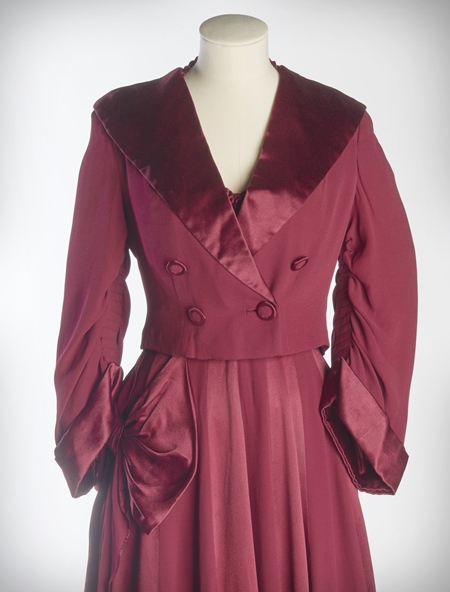
This beautiful dress was both made and worn by Sophie Rabin. (ID no.: 2020.61/2)
Opportunities varied for London’s Jewish fashion designers and makers. This beautiful ensemble was both made and worn by dressmaker Sophie Rabin, whose story offers a wonderful insight into the life and career opportunities for young Eastern-European Jewish migrants in London’s East End.
Rabin came to Whitechapel from Poland in 1914, and went on to have a number of different jobs. She gained skills through her schooling, her first job in blouse manufacture, and through marrying into a family of tailors. She later found work as a dressmaker in the West End, a point of pride within her family as the area was often associated with a higher quality of making and better wages.
The red dress, jacket and bag show not only Rabin’s accumulated skills, but also her personal taste and creativity. Close inspection reveals that only one fabric has been used throughout, and contrast has been created by using both sides of the fabric and creating different textures through fabric manipulation. There is even a commercially made brassiere stitched into the bodice, a knowledgeable maker’s shortcut for providing structure and support.
3. Anwara Begum’s sewing machine
It’s not only Jewish migrants who have shaped London’s fashion industry. London’s East End has been both a home and a place of work for many generations of migrants. Individuals who have travelled to London from Europe, Russia and the Indian subcontinent have often found work in the garment and textile trades, crossing paths in the factories, workshops, markets and homes of Spitalfields, Whitechapel, Bethnal Green and beyond.
This sewing machine belonged to Anwara Begum, a Bengali seamstress who worked from her home on Quaker Street, making garments for local Jewish and Bengali-owned companies. The machine was not only a source of income, but was also used to make clothes for Begum’s family. She called it “amar lokkhi”, meaning “my lucky charm”. An interview with Begum’s daughter Asma will also play in the space, giving the machine the personal resonance it deserves as a precious family heirloom.
4. Dot Cotton’s Alexon coat from EastEnders
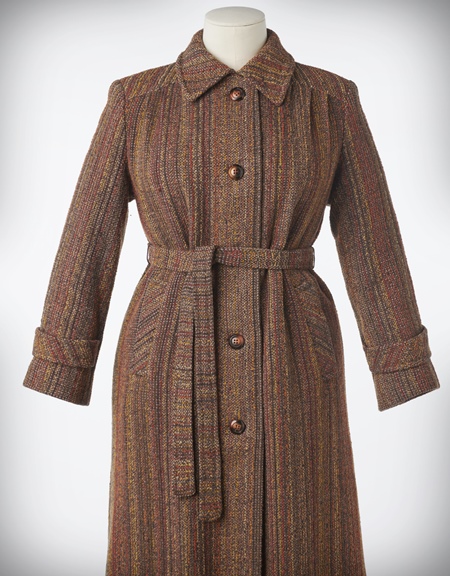
This iconic Alexon coat was worn by EastEnders’ Dot Cotton. (ID no.: 2023.47/4a)
Some garments made by Jewish designers or brands achieved cult status. This coat comes unmistakably from the wardrobe of Dot Cotton, the iconic EastEnders character played for 35 years by actress June Brown. The coat was worn for many years and featured in numerous episodes, including the now-famous episode in winter 2016, when Dot learned that the laundrette would be closing and she was losing her job. Dot’s wardrobe was carefully put together by the EastEnders costume design team, with June Brown taking an active role in shaping her character’s appearance, even occasionally purchasing pieces that she felt were right for Dot’s look.
This coat was likely purchased second-hand, but was made by Alexon, a company known for their high-quality but affordable women’s tailoring. Alexon was founded by Alexander Steinberg, a Polish-Jewish migrant who started the company from his kitchen table in the East End. The business grew, with the help of his sons, to have a global reputation and factories around Britain.
5. An embroidered evening dress by Rahvis
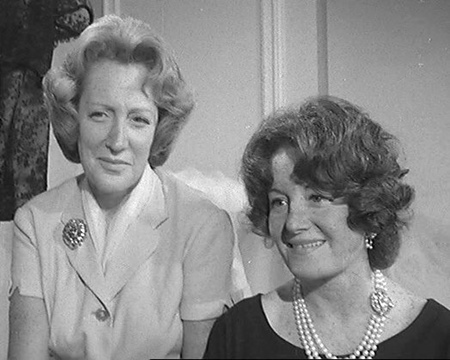
Raemonde and Dora Rahvis in a British Pathé news reel, 1958. (©British Pathé)
This dress is one of the most striking garments in the exhibition. It comes from Rahvis, the couture house run by sisters Raemonde and Dora Rahvis. The sisters were famous for their ability to draw attention, whether to themselves or their designs, and this dress demonstrates this beautifully.
Some Jewish designers fought hard for their place in the industry, and the Rahvis sisters’ careers did not always run smoothly. They made numerous applications to the Incorporated Society of London Fashion Designers, INCSOC, which was the official membership body of the couture industry in London. They desperately wanted the recognition that came with membership, but were rejected on multiple occasions, eventually joining in 1968 just six years before INCSOC was disbanded. They believed that antisemitism was the reason for their rejection, but — as is revealed in the exhibition — there may have been more to this story. The sisters were somewhat scandalous, and did not always draw attention for the right reasons.
6. The ‘maxi-smoking’ dress by Mr Fish
The West End ‘Menswear boutique’, which comes almost at the end of the exhibition, should be a real highlight filled with colourful, shimmering garments that are evocative of London’s famous Swinging Sixties. Here visitors will meet the owners of various hip and trendy Carnaby Street boutiques, as well as the incomparable Mr Fish, who dressed celebrities from Sean Connery and Michael Caine to Mick Jagger and Jimi Hendrix.
The star object in this display is an incredibly rare survival of a Mr Fish ‘maxi-smoking’ dress, similar to one worn by David Bowie on the artwork for his 1970 album The Man Who Sold the World. Mr Fish’s skirts and dresses for men often put the designer Michael Fish in the spotlight during his short career as a boutique owner. He knew how to get press attention, either putting himself or his celebrity friends in front of the camera. One journalist wrote of him: “There was a period when you couldn’t wake up with a hangover without being faced by Mr Fish in a minikilt.”
If these six objects have sparked your interest, there are countless more stories to be found in Fashion City. The exhibition will use the places and spaces of London to weave individual stories together with a broader social history. We can’t wait to hear which items are your favourites. Share them with us by tagging @MuseumofLondon and #FashionCity on all social media channels.
Book your tickets to ‘Fashion City: How Jewish Londoners shaped global style’ here. The exhibition will run at the Museum of London Docklands from 13 October 2023 to 7 July 2024. You can also buy our book that accompanies this major exhibition from our online shop, and at a discount when bought alongside your exhibition ticket.
Want more such stories? Subscribe to our fashion newsletter to read more stories from our collection, and see upcoming events and exhibitions.








